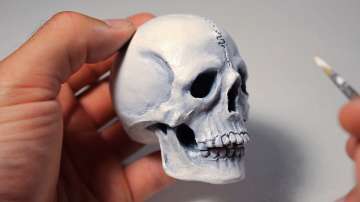As soon as humans stopped foraging and switched to farming especially dairy products it caused several changes in the body structure. The advent of farming had a small but significant effect on the shape of human skulls. Cheese and other dairy items gave us smaller hands and weak jaws, a new research has found.
The effect of agriculture on skull morphology was greatest in populations consuming the softest food - cheese, according to the study published in the journal Proceedings of the National Academy of Sciences."At least in early farmers, milk did not make for bigger, stronger skull bones," said David Katz, postdoctoral researcher at the University of Calgary.
Katz, with Professor Tim Weaver and statistician Mark Grote from University of California-Davis used a worldwide collection of 559 crania and 534 lower jaws (skull bones) from more than two dozen pre-industrial populations to model the influence of diet on the shape, form, and size of the human skull during the transition to agriculture.They found modest changes in skull morphology for groups that consumed cereals, dairy, or both cereals and dairy.
"The main differences between forager and farmer skulls are where we would expect to find them, and change in ways we might expect them to, if chewing demands decreased in farming groups," said Katz.The largest changes in skull morphology were observed in groups consuming dairy products, according to the study. However, differences due to diet tended to be small compared to other factors, such as the difference between males and females or between individuals with the same diet from different populations, Katz said.
One of the reasons could be that bones and muscles became weak in those who refrained from hunting which demands a lot of effort in chewing that food. On the other hand, the population in farming opted softer items thus imposing lesser pressure on jaws. Archaelogists till now were unable to find out the reason behind this change in human skull.
(With IANS inputs)

